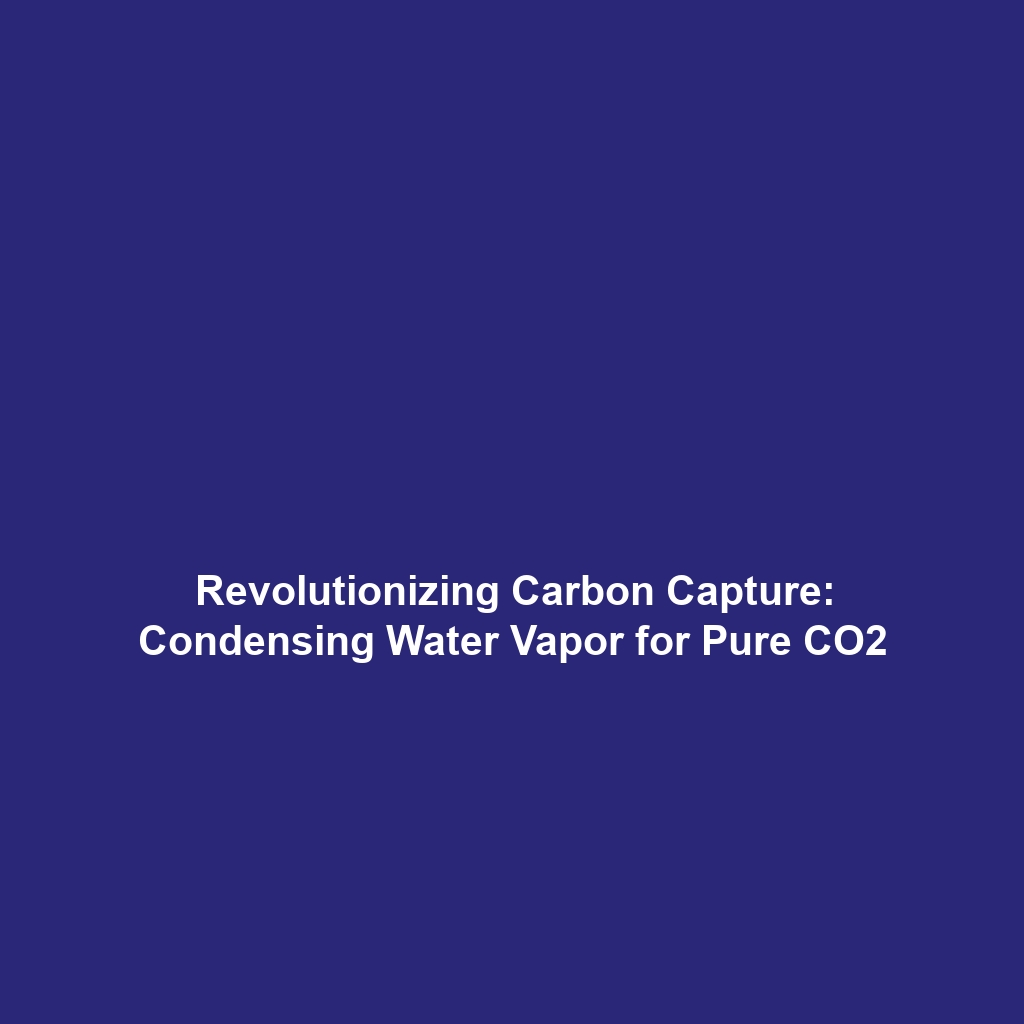The Capture and Storage of CO2 from Condensed Water Vapor in Carbon Capture & Storage (CCS)
Introduction
In the context of climate change mitigation strategies, Carbon Capture & Storage (CCS) is emerging as a pivotal technology. One innovative approach under this domain involves the condensation of water vapor, leading to the capture and storage of nearly pure carbon dioxide (CO2). This process not only reduces greenhouse gas emissions but also enhances the efficiency of energy systems. Understanding how water vapor is condensed for CO2 capture is crucial for advancing CCS technologies, and plays a significant role in our quest for sustainable environmental solutions.
Key Concepts
The process of capturing and storing CO2 from condensed water vapor encompasses several key concepts:
1. Water Vapor Condensation
Water vapor condensation occurs when air is cooled below its dew point, leading to the formation of liquid water. In relevant CCS applications, this process facilitates the concentration of CO2 from flue gas streams.
2. CO2 Capture Mechanisms
Various technologies such as absorption, adsorption, and membrane separation are employed to effectively isolate CO2 from other gases. Condensed water vapor provides a medium through which CO2 can be processed, enhancing separation efficiency.
3. Carbon Storage Techniques
Once captured, CO2 can be stored underground in geological formations or utilized in various applications, thereby reducing its contribution to atmospheric greenhouse gases.
Applications and Real-World Uses
The application of water vapor condensation techniques for CO2 capture has practical implications in several areas:
- Industrial Emissions Reduction: Factories and power plants can implement these technologies to minimize their carbon footprints during energy production.
- Climate Control in Urban Areas: Urban planners can incorporate CCS strategies to manage emissions in densely populated regions.
- Carbon Utilization: The captured CO2 can be repurposed for enhanced oil recovery or in the production of biofuels.
Overall, water vapor condensation technology exemplifies how traditional CCS methods can evolve to address real-world challenges.
Current Challenges
Despite the potential benefits, several challenges persist in the study and application of water vapor condensation for CO2 capture, including:
- High Energy Requirements: The process may demand significant energy inputs, which can offset some of the environmental benefits.
- Material Durability: Equipment used in condensation and CO2 capture must withstand corrosive environments over prolonged usage to be effective.
- Economic Viability: The cost of implementing these systems can be prohibitively high, particularly for smaller facilities.
Future Research and Innovations
Advancements in technology are vital for enhancing the efficacy of water vapor condensation methods in carbon capture:
- Next-Generation Materials: Research into innovative materials that provide higher durability and efficiency could lower costs and energy consumption.
- Process Optimization: Improving existing processes will increase the overall yield of captured CO2 while minimizing energy use.
- Integration with Renewable Energy: Developing systems that work alongside renewable energy sources may enhance sustainability and carbon neutrality.
Conclusion
The water vapor condensation process plays a critical role in advancing Carbon Capture & Storage (CCS) technologies by offering a means to effectively capture and store nearly pure CO2. As environmental challenges continue to escalate, the importance of innovating within this field cannot be overstated. To learn more about strategies to mitigate climate change and explore further resources on CCS, visit our related articles.








